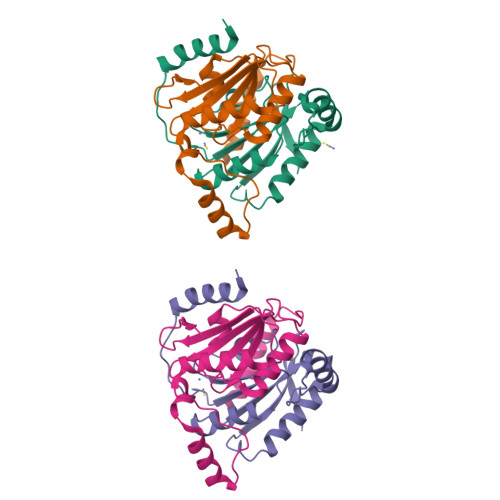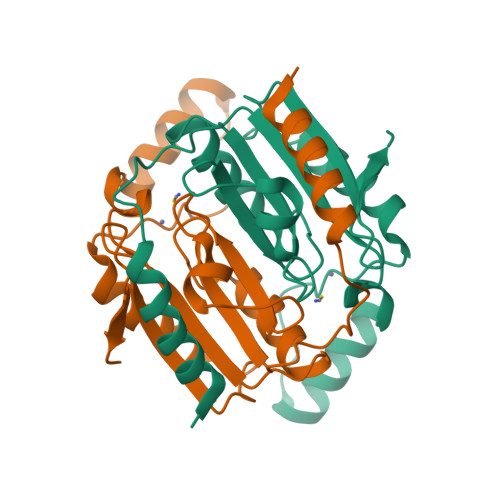Structure and function of carbonic anhydrases from Mycobacterium tuberculosis.
Suarez Covarrubias, A., Larsson, A.M., Hogbom, M., Lindberg, J., Bergfors, T., Bjorkelid, C., Mowbray, S.L., Unge, T., Jones, T.A.(2005) J Biological Chem 280: 18782-18789
- PubMed: 15753099
- DOI: https://doi.org/10.1074/jbc.M414348200
- Primary Citation of Related Structures:
1YLK, 1YM3 - PubMed Abstract:
Carbonic anhydrases catalyze the reversible hydration of carbon dioxide to form bicarbonate. This activity is universally required for fatty acid biosynthesis as well as for the production of a number of small molecules, pH homeostasis, and other functions. At least three different carbonic anhydrase families are known to exist, of which the alpha-class found in humans has been studied in most detail. In the present work, we describe the structures of two of the three beta-class carbonic anhydrases that have been identified in Mycobacterium tuberculosis, i.e. Rv1284 and Rv3588c. Both structures were solved by molecular replacement and then refined to resolutions of 2.0 and 1.75 A, respectively. The active site of Rv1284 is small and almost completely shielded from solvent, whereas that of Rv3588c is larger and quite open to solution. Differences in coordination of the active site metal are also observed. In Rv3588c, an aspartic acid side chain displaces a water molecule and coordinates directly to the zinc ion, thereby closing the zinc coordination sphere and breaking the salt link to a nearby arginine that is a feature of Rv1284. The two carbonic anhydrases thus exhibit both of the metal coordination geometries that have previously been observed for structures in this family. Activity studies demonstrate that Rv3588c is a completely functional carbonic anhydrase. The apparent lack of activity of Rv1284 in the present assay system is likely exacerbated by the observed depletion of zinc in the preparation.
Organizational Affiliation:
Department of Cell and Molecular Biology, Uppsala University, S-751 24 Uppsala, Sweden.





















